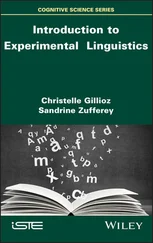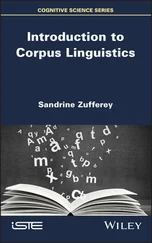glottal plosive (glottal stop) 34
flouting of conversational maxims 397, 399
Goal 334
focus 282, 389–92
Gordon, P. 192
position 282
grammar of a language 2–6, 81, 83, 120, 238, 306,
focus bar 88
345, 350, 407
Fodor, J. 201
grammatical categories 247
form (v. lemma)
in acquisition 186–8
in lexical entries 128, 205–7
in sentence comprehension 200
free morphemes 140
grammatical functions 247–50, 262
Frege, G. 338, 339, 344
grammatical (morphosyntactic) word 146, 159
French 90–1, 215, 224, 225, 230
Greek 160, 225
frequency effect
Greek alphabet 119
in paraphasias 217, 218
Grice, P. 396–7, 398, 402
in substitution errors 208
Grimshaw, J. 302
fricatives 29, 31–3
Grodzinsky, Y. 380–2
Frisian 231
gutturals 78
Fromkin, V. 207
front vowels 36, 109–10
Halliday, M. 97
functional categories 132–5, 247, 385
hard palate 31
in aphasia 214–17, 378–82
harmony
comprehension of in agrammatism 378–80
consonant 99
in language acquisition 187–8
lateral 101–4
and pragmatic presupposition 393
velar 99, 101
production of in agrammatism 378
vowel 99–100
in SLI 219–21
Hawaiian 81
function words 132
head
of compounds 148
gapping 272
of phrases 257–61
garden-path sentences 10, 370, 374, 408
head-driven phrase structure grammar 246
gender
head first word order 321, 350
errors in agrammatism 380, 381–2
head last word order 321
errors in SLI 385
head movement 293–6, 298, 306
in Old English 233
Head Movement Constraint (HMC) 318, 324
gender and language use 49, 234
Head Position Parameter 321, 349, 350–1, 361
generative grammar 4, 245
Head Strength Parameter 314
generative phonology 97–8
Hebrew 215, 380, 381
generic interpretation
Henry, A. 300
of determiners 284
high as phonological feature 413
genetic endowment and language 7, 13–14,
high vowels 36, 109–10
188, 311
historical linguistics 15–16
and language disorders 213
Hoekstra, T. 373
genitive case 248, 265, 267, 356, 360–1
Holmes, J. 49
and possessors in Child English 359–61
host for clitic 151
Georgian alphabet 119
Hungarian 38, 99, 156, 224, 267, 360
German 81, 162, 164, 206, 231, 321–4
Hyams, N. 351–2, 359–61
clause structure in 321–4
hyponyms 172
movement in 322–3
in Wernicke’s aphasia 218
operator questions in 323–4
hyponymy 170–3, 177, 178, 194
SLI in 383–5
strong C in finite clauses in 323
Icelandic 230
strong T in finite clauses in 323
idealisation 409
yes-no questions in 324
identification experiment 110–11, 112
Index
427
identification of null subject 320, 352
Iroquoian 161
identity of meaning (see synonymy)
isolating languages 156, 157
imaging techniques 13
Italian 214, 224, 230, 380
imperative 254, 394–5
aphasic speech in 215, 380, 381–2
implicational scale 55–6
implicit (understood) subject 277, 351
Jamaican Vernacular English (JVE) 313–14
incomplete phrase 261–2
weak C in 314
incorporation 160–1
Japanese 38, 78, 81, 160
independence of language faculty 11, 377
topic marking in 391–2
indirect speech acts 394–5
Jones, D. 27
inferences in conversation 400
infinite nature of language 3–4, 260
labelled bracketing 141, 258
infinitive 134
labelled tree diagram 141–2, 258
infinitive particle 259–60
labials 34
as non-finite T 259
labiodentals 31
infinitive phrase 259
Labov, W. 16, 56, 57–8, 66–7, 68, 70
infix 163
language contact 227
INFL as grammatical category 261
language change 15–16, 56–8, 61–72
inflection 143
language disorders 11–14, 408
in English 137
Language Faculty 7–9, 280, 349–50
in grammar 136
language games 117
inflectional categories 136
language shift 15
as deictic 389
language use
inflectional errors
and the structure of society 14–16
in agrammatism 378
language variation 15
in SLI 219–21, 385
laryngeal fricative (see glottal fricative)
inflectional formative 145
larynx 28
inflectional languages 156, 158–9, 160
Lashley, K. 116–17
inflectional morphology 143, 144–8
lateral as phonological feature 413
in compounds 150
lateral harmony 101–4
in language acquisition 187, 188–92
laterals 33
inflectional paradigms in aphasia 216
in child phonology 100–4
inflectional properties 137
Latin 157–60, 165, 224, 225, 391
inflectional rules (see morphological processes)
Latin alphabet 119
inflectional systems 156
lax vowels 38, 77
informational encapsulation 201
lemma 205–7
‘information’ in categories 195–6
retrieval of 207–9
information structure 390–1
lesions of the brain 11
innateness hypothesis 7, 11, 213, 349–50, 361, 408
levels of linguistic analysis 76–7, 78, 106, 120
input representations in child phonology 103–6
Levelt, P. 205
Instrument 333
level tones 43
interaction and variation 54
lexeme 143–4, 145, 146, 205
interdentals 31
lexical attrition 228
interrogative 253–4, 394–5
lexical categories 129–32, 247
interrogative complement 299–300, 303
lexical diffusion 68–70
interrogative interpretation 300–2, 341
lexical entry 4, 78, 128, 129, 131, 138, 147–8, interrogative operator 302–3
152, 170, 176–8, 191–2, 219–20, 238, 287, intonation 43–4
335, 407
intonational change 71–2
v. concept 205, 225
Inuit 119
lexical functional grammar 245
inversion
lexical gap 174
in questions 294–6, 300, 316, 322
lexical learning 349
in varieties of English 311–14
lexical recognition 201–3, 207–9
IPA (International Phonetic Association)
lexical stress (see word stress)
27–44, 411
lexical substitutions in speech errors 207
Irish Gaelic 225
lexical tone 43
irony 397
lexical verbs 133
428
Index
lexicon 4, 128, 131, 137–8, 147–8, 170–6, 199,
monophthongs 38
203, 217–18, 238, 345, 354, 407
monosyllabic words 41
grammatical properties in 4, 147
mood and speech acts 394–5
phonological properties in 4, 147
morphemes 140–3
psycholinguistics and 204–10
in aphasia 214–17
semantic properties in 4, 147
bound 140
LF component of a grammar 5, 407
free 140
Linear B 119
as minimal linguistic sign 140, 145
linguistically determined variation 54–6
morphological change 233–7
linguistic experience of the child 7–8
morphological development in children 188–92
linguistic variables and language use 47–58
morphological irregularity 137
Linking Rules 335
morphological operations 162–5
liquids 33
morphological processes 140–50, 157–65, 407
Literary Welsh 164–5
dissociation of in SLI 219–20
litotes 397
as features 153
Liverpool 63
phonological conditioning of 152, 220
local attachment preferences 372–3
realisations of 152
localisation of brain function 11–13
voicing as 164
Читать дальше
![Andrew Radford Linguistics An Introduction [Second Edition] обложка книги](/books/397851/andrew-radford-linguistics-an-introduction-second-cover.webp)











